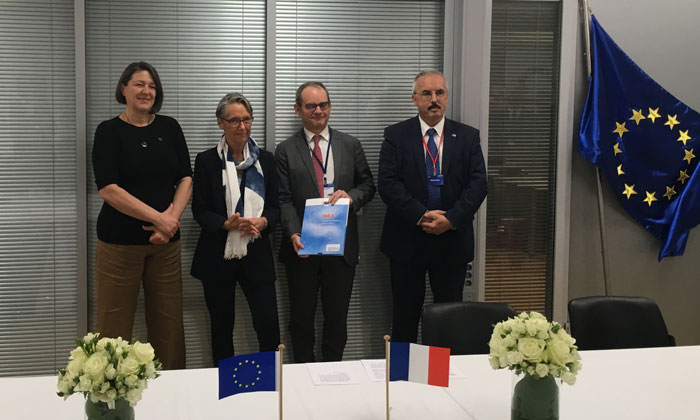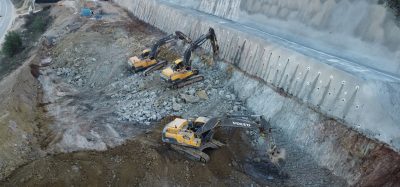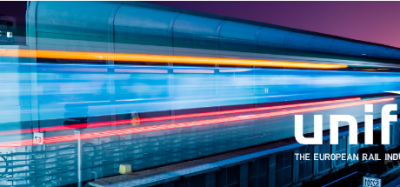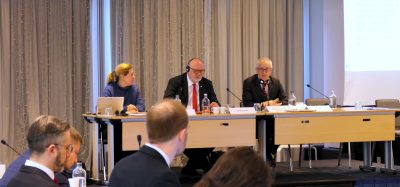EU funding supports ERTMS Level 2 deployment on Paris-Lyon HSL
Posted: 26 April 2018 | Global Railway Review | No comments yet
The Paris-Lyon high-speed line will soon benefit from more trains with improved regularity and performance following funding support from the European Union of approximately €117 million for the deployment of ERTMS Level 2 along Europe’s most heavily trafficked line.


European Transport Commissioner Violeta Bulc; France’s Transport Minister Elisabeth Borne; SNCF Réseau Chairman & CEO Patrick Jeantet; Dirk Beckers, Director of INEA
At a ceremony today in Ljubljana, Slovenia, European Transport Commissioner, Violeta Bulc, has delivered the signed funding agreement for the deployment of ERTMS (European Rail Traffic Management System) Level 2 on the Paris-Lyon high-speed line. To accept the agreement was France’s Transport Minister Elisabeth Borne and SNCF Réseau Chairman and CEO Patrick Jeantet. Also in attendance was Dirk Beckers, Director of the European Innovations and Networks Innovative Agency (INEA). Through this agreement, the European Union is to award a grant of approximately €117 million under the 2014-2020 Connecting Europe Facility programme.
This new technology will enable transport capacity on the line, currently the most heavily trafficked in Europe, to be increased. One-third of all domestic high-speed traffic transits via this line, which also handles major trans-European services connecting different regions of France with Spain, Italy and the north of Europe. Every day, an average of 240 trains operate over the busiest section of a line that carried 44 million passengers in 2017. At present, the Paris-Lyon high-speed line is worked to maximum capacity at peak times of day.
Passenger numbers are constantly on the increase and, with the advent of new operators following market opening, train paths will be in even greater demand. SNCF Réseau has therefore decided to invest in installing ERTMS (Europe’s most advanced signalling system) on this line as part of a project co-funded by the European Union.
Major European support
Following grants awarded in 2013 and 2016 for project studies and preparatory actions, the European Union has now agreed to contribute €116.9 million, in other words, 40 per cent of the investment needed to deploy ERTMS and replace part of the interlockings on the line (for a total price tag of €294 million).
In total, more than €600 million are to be invested in the Paris-Lyon line:
- €130 million for ERTMS
- €340.8 million for replacement and/or adaptation of interlockings
- €60.2 million to provide the additional electric power supplies necessary to cater to extra traffic
- €53.3 million to adapt the infrastructures in the Paris and Lyon hubs to handle extra trains
- €23.4 million as part of overall plans to enhance the environmental-friendliness of the line.
A project with many benefits
With the ERTMS Level 2, train headways can be managed in real-time, resulting in increased line capacity and enhanced train regularity. The system will also contribute towards meeting European rail system interoperability targets. Ultimately, it will replace the 27 different signalling systems currently in use in Europe.
The two key benefits from this project are:
- More trains by enabling the number of trains in operation at peak times to be increased from 13 to 16. Traffic on the high-speed line will be more precisely controlled, reducing headways and thereby releasing more capacity
- Greater regularity courtesy of more modern equipment and improved traffic control centralised within a single ‘railway control tower’.
Elisabeth Borne said: “This funding agreement signed with the European Commission is a highly positive development that fully tallies with our mobility policy in two respects. The project will contribute towards network modernisation, a clear demonstration of how innovation can help us make better use of existing infrastructure. It is also an investment which attests to France’s determination to be a central feature of Europe’s transport networks and which will enable us to offer extra services to our passengers.”
Patrick Jeantet said: “This agreement signals a new departure for SNCF Réseau in its bid to develop an ultra-high-capacity, high-performance network. We will be able to handle more trains and, by extension, more passengers with improved regularity and performance.”
Why ERTMS technology?
Today, train movements are controlled by a signalling system comprising trackside marker boards and colour-light signals. By contrast, ERTMS technology is based on the cab signalling principle.
Information is exchanged between ground and train via the GSM-R network reserved exclusively for railway use. This information then serves to enable ERTMS to control train speeds in real-time and shorten train headways.
With ERTMS, drivers can be informed in real-time of the ideal speed at which their trains should be running in relation to traffic density and train characteristics (weight, maximum speed, deceleration and braking capacity) or can be ordered to perform emergency stops in the event of incident.
Installing ERTMS on the Paris-Lyon high-speed line represents a major challenge for SNCF Réseau, since it is the first time it is deployed on a line already in service without halting traffic flows.
ERTMS 2 technology will also be deployed on the conventional line between Marseille and Ventimiglia from 2025.
Related topics
European Rail Traffic Management System (ERTMS), Funding & Finance, High-Speed Rail, Infrastructure Developments, Signalling, Control & Communications
Related organisations
European Commission (EC), Innovation and Networks Executive Agency (INEA), SNCF Réseau







